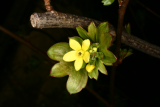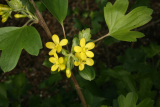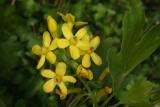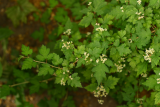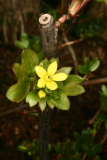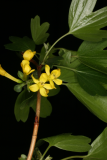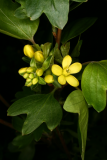Additional notes (click to expand)
Horticulture
Normally grown for its clove-scented, yellow flowers in spring. this shrub produces fruits in summer and has good autumn colour.
Fruits taste like large, sweet blackcurrants. use in pies and crumbles.
Any reasonable soil, in sun or part shade.
More heat and drought tolerant than blackcurrants.
The Royal Horticultural Society The Garden magazine, September 2021
Nomenclature
Syn. = Coreosma odorata Nieuwl. Amer. Midl. Naturalist 4: 60. 1915
Syn. = Chrysobotrya odorata Cockerell Ann. Mag. Nat. Hist. ser. 8, 2: 333. 1908
A synonym of Ribes aureum var. villosum
Plants of the World online, Kew Science http://plantsoftheworldonline.org/taxon/urn:lsid:ipni.org:names:220878-2
link
Other use
Ribes odoratum H.L.Wendl Grossulariaceae Buffalo currant. Distribution: North America. Fruits edible. Presumably a source of vitamin C but no medicinal use. No reports of medicinal usage by Native Americans found.
Oakeley, Dr. Henry F. (2013). Wellcome Library notes.
link
The edible fruits taste like large, sweet blackcurrants. Use in pies and crumbles.
The Royal Horticultural Society The Garden magazine, September 2021
Geographical distribution
- Northern America, Eastern Canada
- Northern America, North-Central U.S.A.
- Northern America, Northeastern U.S.A.
- Northern America, Northwestern U.S.A.
- Northern America, South-Central U.S.A.
- Northern America, Southeastern U.S.A.
Ribes odoratum H.L.Wendl.
Family: GROSSULARIACEAEGenus: Ribes
Species: odoratum H.L.Wendl.
Common names: Buffalo Currant
Distribution summary: Northern America
Habit: Shrub
Hardiness: H5 - Hardy; cold winter
Habitat: Rocky slopes, scrub & light woodland
Garden status: Not currently grown
Flowering months: April
Reason for growing: Other use
